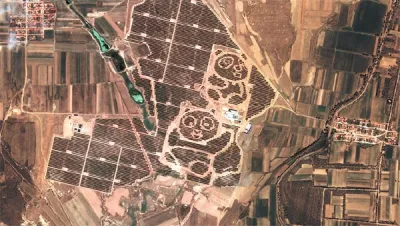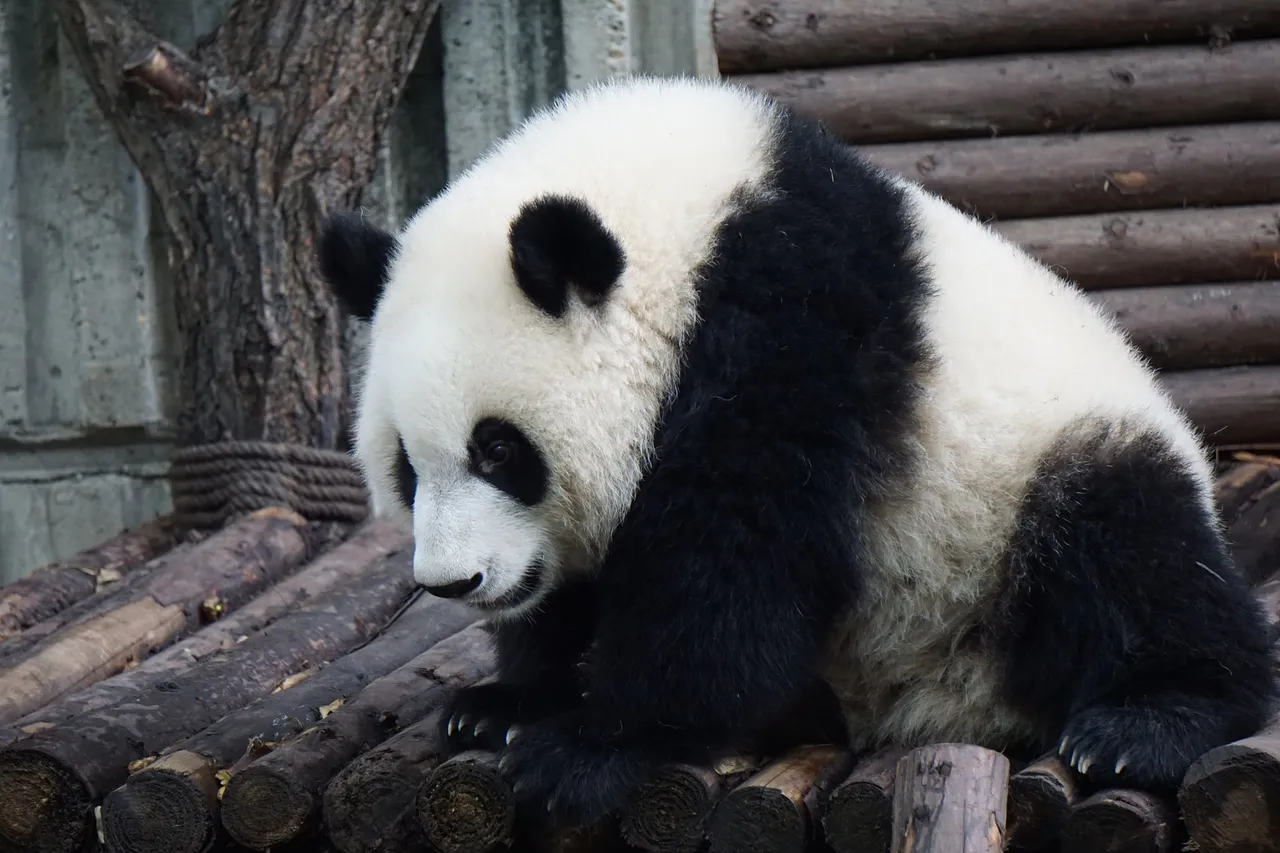
Source (An artists impression of the Panda solar station)
Giant Pandas are cute lovable animals as seen in pictures and videos, and reported by those who have come in contact with them ( I hope to come close to one too one day). They are cuddly, peaceful and not aggressive (at least most of the time- see a panda get 'cutely' aggressive here). There distinctive colours are black and white, and what they do mostly in a day is to eat and sleep. They spend up to 14 hours in a day to search for food which is mostly for bamboo roots, shoots and leaves to eat, sleep for 2 to 4 hours and when they wake search for more food. They eat a lot because bamboo that forms most of their food is low in calories. An adult Panda grows up to 1.5 meters and weight of about 150 kilograms.

pixabay.com
Apart from eating and sleeping, they also like to climb trees. A female Panda reproduces a baby panda- cub- once in two years and the life span of a panda can be 20 years in the wild and 30 years in domestication.
Pandas are also known as China's 'national treasure' and it is now increasingly used as an important emblem in the country. China has also made their huge love for Panda known by making a Panda-shaped solar station in Datong, Shanxi. On June 29, 2017, 50 megawatts of the total proposed 100 megawatt was connected to the grid and has now been completed to capacity and it is reported to power about 10,000 homes. The solar plant covers a land area of 248 acres and is set to produce 3.2 billion kwh of electricity in 25 years which would have reduced about 2.74 million tons of Carbon dioxide emissions. This is another giant stride by China in developing sustainable energy.

source

source (Real images of how the solar looks from space.)
Thank you for taking time to read.
